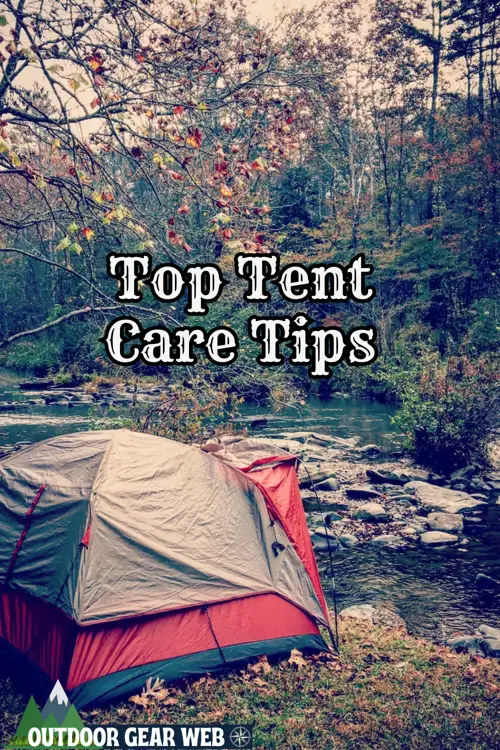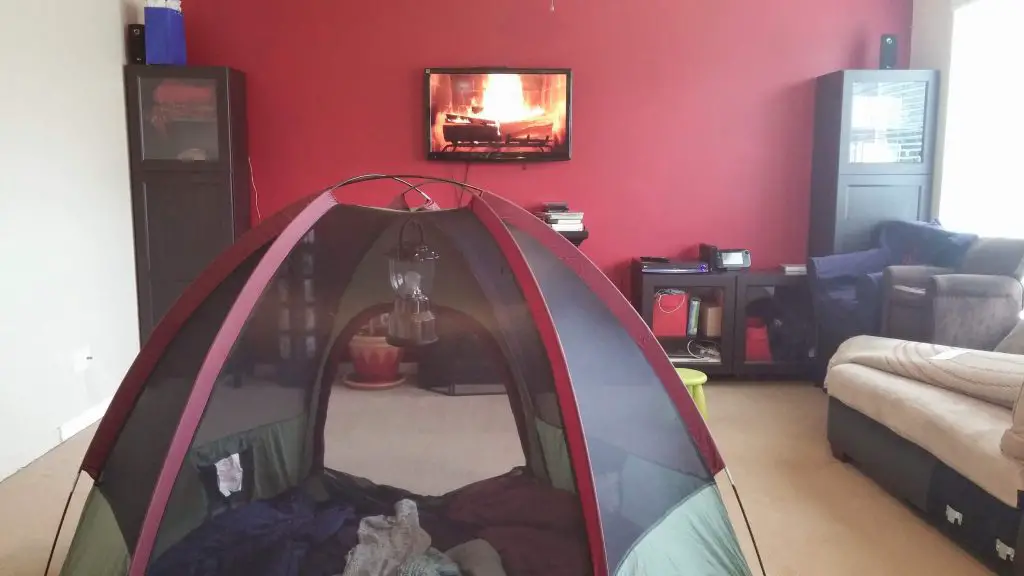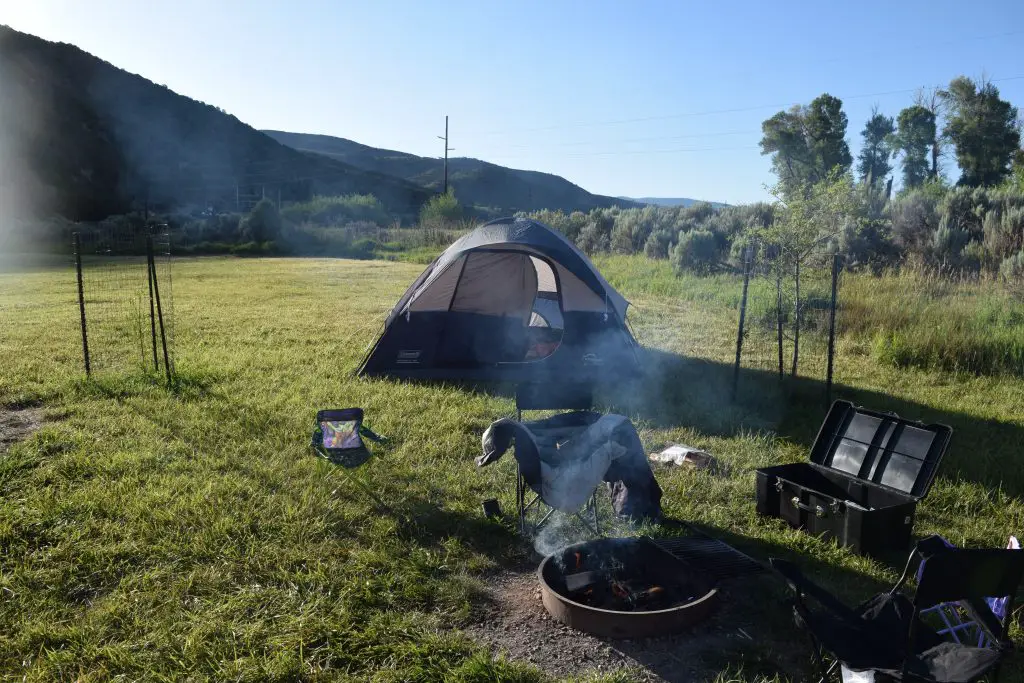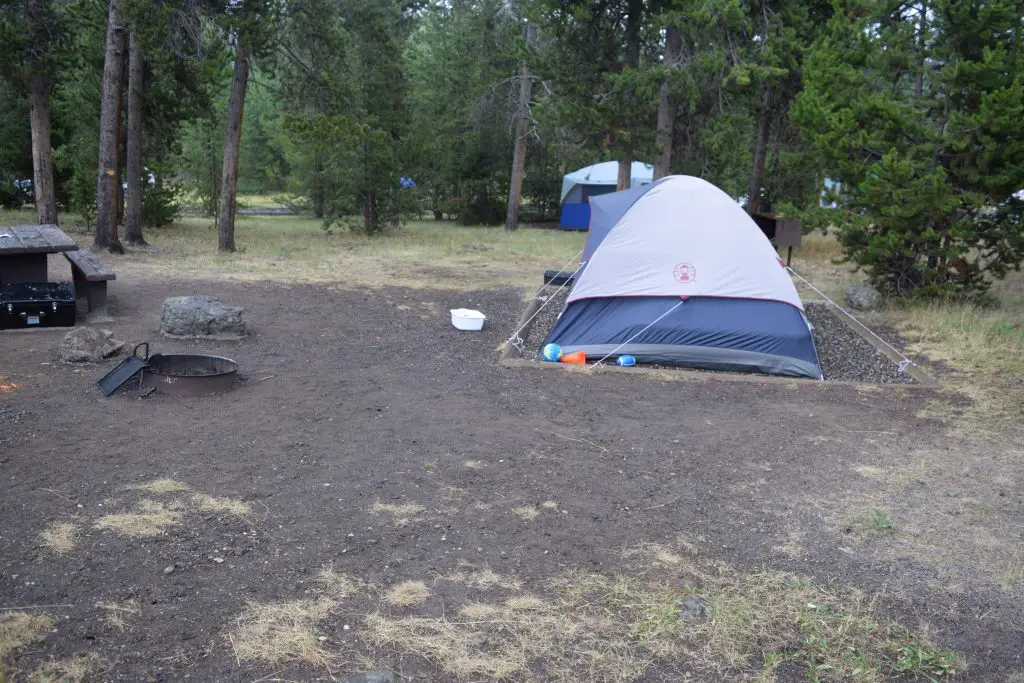
Tents are, in general, genuinely strong. With the right consideration and some light upkeep, they can work well for you for a long time. Be prepared to have a single-use tent if you fail your maintenance routine. By following our top tent care tips, your tent will be a piece of gear you’ll appreciate for some time. Especially during those packing, hiking, and setting up camp excursions activities that you have to do on each trip. There is always more you can do to protect your tent. However, the top tent care tips will get you on your way to having a great camping trip.
Take your tent on one of these affordable fall camping getaways.
Top Tent Care Tips at Home
Set aside the time to set up your at-home, before you head out. As they say, practice makes perfect. The more comfortable you are with the cycle, the more agreeable you’ll be, in the campground. Remember the tent will be harder to set up when your children are screaming that they want dinner that first night! Furthermore, having the option to set up your tent rapidly and effectively is a great expertise to have, on the off chance that you wind up making camp in obscurity or in a downpour. Setting up your tent at home is likewise an incredible method to check to ensure that you’re not missing any basic parts. Also, things can happen in storage like moth or rodent damage. Setting up beforehand can help identify these issues.

What about washing?
We don’t suggest washing your tent. It is possible to wash a tent, but most cleansers and scouring tools are not meant for tents. However, washing a tent might become a necessity because of something that happened in the field. If washing is necessary, never machine wash a tent in a washing machine as it can harm your tent. Clothes washers can tear the material easily, cause creases that prevent the tent from being set up, dissolve textures, or delaminate waterproofing. Always wash by hand. Utilize a wipe, a gentle cleanser, and tenderly hand wash and flush the tent. Set up your tent to completely air dry when you are done.
Not sure which tent to buy? Read more about our lightweight tent recommendations.
Seam Care
The biggest failure point that tents are going to have is at the seams. All tents have needle openings which the manufacturer will cover with tape after the material is sewn together. A joint that brings two pieces of material together is a definite location where water can enter the tent. If you start to notice that these joints are separating or are missing the tape over the stitches then it is time to start waterproofing.
Purchase a crease sealer in order to supplement the joint tape that is already in place. You can even double up on the sealing material with two light layers to make a more substantial layer. It is best to always try to keep all of your joints well-sealed. Additionally, some tents are able to be completely coated in waterproofing such as this. If your tent can then you should waterproof as much of it as possible. There is nothing worse than waking up after a long night in a storm to a wet sleeping bag.
Mold Growth
The most ideal approach to prevent mold from harming your tent is to keep it from growing in the first place. Put your tent away dry and the build-up will be prevented. Never keep your tent wet in the stuff sack for longer than needed.
Anyway, in the event that it has begun to develop, you should make a move to prevent it from getting worse. Set up your tent. With a damp wipe rub the influenced region tenderly to wipe it off. This will eliminate a portion of the buildup. Next in a 1-gallon bucket blend 1 cup of lemon juice and some cleanser. Plunge the wipe and yet again clean the regions influenced. Next, flush the wipe in clean water and go over the influenced regions. Set your tent to the side and let air dry. If it’s not too much trouble, note that buildup invades the real texture of the tent so you can kill it however the spots will remain.
Also, if the mold has already spread across your tent then it may be time to purchase a new one. Once mold starts to grow it is likely that it will come back as removing all the spores without chemicals can be difficult or near impossible.
Pair your well-cared-for tent with one of these great sleeping bags.
Top Tent Care Tips at the Campground
Discovering a Spot
At the point when you are searching for a site to camp out, in the backwoods, search for a setup that has very few plants and brush that could scrape the floor of your tent. This region ought to likewise be somewhat level. At the point when you’ve settled on your ideal spot, clean up anything that might be on the ground, sticks, stones, and whatever else that could tear an opening in your tent floor, erode the waterproofing, or simply make for an awkward surface to rest upon.
Want more tips on selecting a camping spot? Check out our spot selection tips here!
The soft ground material is the most ideal approach to ensure your tent floor will last through your trip. It will shield your tent floor from tears, openings, and scraped spots. Your floor will only be waterproof until you punch a hole in it. It is not always the case that you will be able to find a soft bedding material or completely clear a space. There is a step you can take. Purchasing a tent ground cloth or tarp that fits your tent floor is a necessity. Not only does it protect the floor but it also provides an added layer of protection from water intrusion. You will want to get a tarp that is just slightly larger than your tent floor. This will provide that added protection and a tarp is less expensive to replace if it gets holes than a tent.

Set up your Tent
Maintain your tent by ensuring it is set up correctly. As stated above, you should practice this at home a couple of times first, so you’ll be an ace when you hit the path. Indeed it is an excellent plan to set your tent up before each outing just to be certain that it is as fit as a fiddle. An appropriate set-up tent has no drooping parts and ought to be marked out for extra rigidity and security. In case you can’t stake it out, you can utilize rope to tie it out to trees. Have everything rigid. In case it isn’t, the fly will droop against the tent body, and buildup could leak down into the inside. Additionally, attempt to set up your tent in a concealed region.
UV beams from the sun can corrupt your tent texture and will have you back purchasing another tent, sooner than you might want. It is important that whenever possible you use the guy lines that are part of the tent. While these can be a tripping hazard, they help extend the life of your tent. Avoid the tipping hazard by affixing some pool noodles or marking tape.
Take care of the shafts
When assembling your tent shafts, be delicate. While it’s enjoyable to allow the shock to rope accomplish the work and let the posts simply go together without anyone else, it’s not the best thought. Remind your kids not to snap them together or use them for karate. Combine them cautiously, with the goal that the finishes don’t break or chip. When dismantling the posts, start separating them from the center joint, to calm strain on the string.
On the off chance that a post breaks, you might have the option to utilize a shaft fix sleeve. Numerous makers have fixed sleeves for explicit models. A substitution post sleeve is a short aluminum tube that has an inward width marginally bigger than your tent shaft; you slip it down over your tent shaft and afterward, tape it into place. Tents with aluminum posts use shaft sleeves for repair, but these do not work on fiberglass shafts. There are options for other materials as well but they degrade over time or make the tent more difficult to transport and set up.

All through your Tent
Leave your shoes outside the tent when entering. Leaving shoes outside prevents a buildup of soil inside the tent. Soil followed into a tent, from messy shoes, can rub against the floor and cause harm. Indeed, even if you don’t get dirt off your shoes; you should shake out your tent prior to separating it. Consider utilizing a little area rug simply within your tent entryway. You can wipe your feet and leave your shoes here instead of outside.
Packing your Tent
When storing your tent, the main factor is that it is dry and clean from any flotsam and jetsam. At the campsite you might get together your wet tent and store it for a brief time however within 24 hours you should completely dry it out. You can set it up to dry at home or hang it someplace to dry. At the point when it is totally dry lay the tent level on the ground with the floor on the base.
Family tents might be collapsed in quite a few different ways however by and large it is simpler to overlay it in thirds or quarters depending upon the length of the stuff sack. Overlap your fly and lay it longwise on the tent. Overlap the tent over that so you have the fly inside the folds of the tent. Put the shafts in their sack, drop the stake pack into the post sack, and lay the entire thing across the collapsed tent. Roll it up firmly, beginning with the shafts. Roll gradually, compelling the air out of the tent. Done appropriately the entire tent should drop squarely into its bag.
Continue your camping exploration with these ultimate camping destinations in the USA.
Top Tent Care Tips
So what do you think? Have we missed any important tent care tips? Camping can be an exhilarating experience but not doing your maintenance upfront can make it bad. Take care of your tent and it will keep you dry even in the biggest storms. Remember, practice setting up and packing your tent. You do not want to end up with a single-use tent because you didn’t take the time to learn how best to take care of it.










